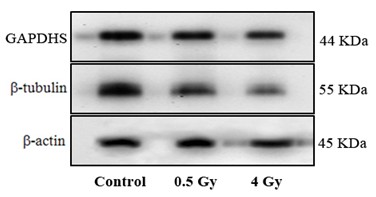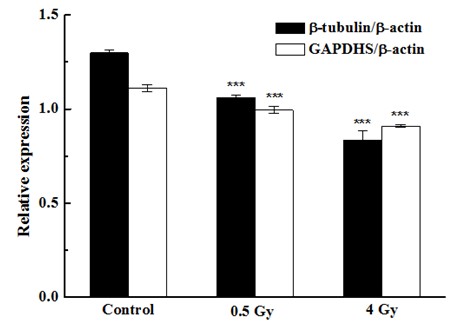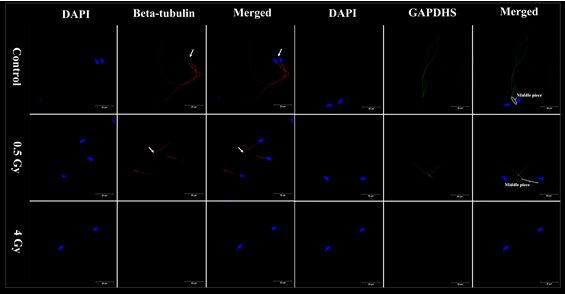Ion radiation or radiotherapy may cause male with oligozoospermia, azoospermia, temporarily infertility, or even permanent infertility. The decline of sperm motility is the most important factor leading to infertility. However, the mechanisms underlying motility abnormalities remain poorly understood after ionizing radiation.
The relationship between low sperm motility and proteins has been investigated by the researchers in the department of Heavy Ion Radiation Medicine, Institute of Modern Physics, Chinese Academy of Sciences (IMP).
Mice were irradiated with carbon ion beam at the Heavy Ion Research Facility in Lanzhou (HIRFL). β-tubulin and GAPDHS (Glyceraldehyde-3-phosphate dehydrogenase, testis-specific) were found to be associated with low sperm motility in male mice after irradiation. In order to further analyze the relationship of both proteins and sperm motility, the expressions of these proteins were measured by immunoblotting and immunofluorescence.
The results demonstrated that radiation changed the β-tubulin expression in sperm, the reduction of β-tubulin expression diminished the relative sliding capacity of flagellar axoneme and led to the damage of sperm motility. Meanwhile, radiation effected the sperm energy supply, the lack of GAPDHS in mouse sperm selectively inhibited glycolysis and led to insufficient supply of sperm energy, thus affected sperm motility. These proteins are potential markers for the mechanisms of reproductive toxicology after heavy ion radiation.
The results have been published in Toxicology, 306 (2013) 85–92 .

Fig. 1 Expression of β-tubulin and GAPDHS in epididymal spermatozoa by Western blot analysis. (Image by IMP)

Fig. 2 Relative expression of β-tubulin (Optical density of β-tubulin/β-actin) and GAPDHS (Optical density of GAPDHS /β-actin) . (Image by IMP)

Fig. 3 Immunofluorescence shows that β-tubulin and GAPDHS are localized in epididymal spermatozoa. (Image by IMP)

